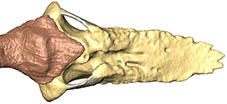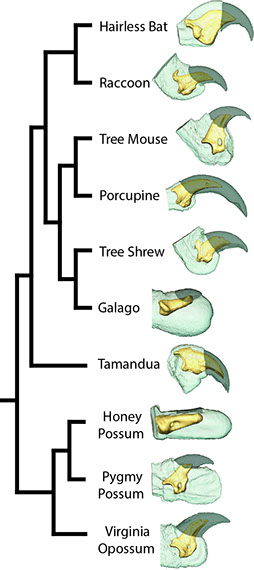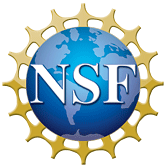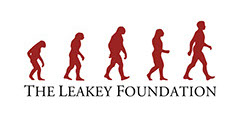Stephanie A. Maiolino, PhD
Current Research
Grooming ungues in anthropoids and other primates
Grooming ungues (often referred to as grooming or toilet claws) are specialized nails or claws used to scratch and clean the fur around the head and neck of many mammals. Strepsirrhines (lemurs, lorises, and galagos) have grooming ungues on each 2nd toe while tarsiers have them on each 2nd and 3rd toe. Further, it is widely assumed that anthropoids (monkeys, apes, and humans) lack grooming ungues. Therefore, the presence, absence, and location of grooming ungues have been used to indicate phylogenetic relationships among fossil and living primates. However, my work has demonstrated the presence of grooming ungues in certain platyrrhine monkeys (Maiolino et al., 2011) rendering the ancestral condition of anthropoids unclear. If the ancestral condition was to possess a grooming unguis, than an absence of one should not be used as evidence for a close relationship with this clade. My research is currently investigating the presence of grooming ungues in anthropoids and fossil primates by surveying and quantifying the morphology of a broad sample of living and fossil primates. This data is being used to estimate the ancestral conditions of primate groups with the intention of elucidating the ancestral state of the anthropoid clade.
Evolution of nails
Many arboreal mammals use claws as hooks to climb on vertical supports such as tree trunks. Most primates have flattened nails instead of claws and therefore, must support their weight on vertical substrates using alternate mechanisms such as grasping. Therefore, primates are thought to be incapable of climbing on supports that are too large in diameter for them to grip or wrap their limbs around. Because nails seemingly limit climbing behaviors, the widespread presence of nails in the largely arboreal group of primates is particularly interesting. My research investigates the presence of nails in primates using an integrative approach that includes assessment of the comparative anatomy of mammalian digit tips, analysis of distal phalanges from early fossil primates, and digital modeling.
Research Methods
My current research focuses on the evolution and functional morphology of the complex of structures on the ends of the digit tips of primates and other mammals. I use a variety of approaches to test hypothesized relationships among morphology, phylogeny, and behavior:
- Dissection (both traditional and virtual)
- Construction of 3D digital models from microCT scans
- Phylogenetic comparative methods
- Ancestral state estimations
- 3D geometric morphometrics


Digital reconstruction of a grooming distal phalanx and associated tissue from a lemur

Examples of mammalian digit tips showing independent evolution of nails in primates (represented by the galago) and honey possums (a small australian marsupial)


Funding
My research has been funded by the NSF (BCS-1341075), the Leakey Foundation, and a GSEU (Graduate Student Employees Union) Professional Development award (Stony Brook University).